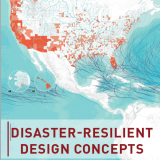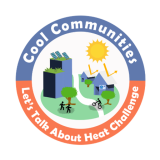EPA's Programs and Actions to Address Extreme Heat
Extreme heat events have become longer, more frequent and more intense in recent decades. These trends are expected to continue with climate change. Heat is the leading weather-related killer in the United States, disproportionately impacting older adults, the very young and other at-risk populations. EPA’s core competencies in science and research, heat island mitigation and climate adaptation inform wide-ranging solutions to extreme heat.
The resources on this page highlight EPA programs and efforts that focus on reducing exposure to extreme heat and protecting public health.
On this page:
- EPA’s Participation in the National Integrated Heat Health Information System (NIHHIS)
- Programs, Funding and Technical Assistance
- Policy Implementation
- Research
- Heat Communications
On other pages:
EPA’s Participation in the National Integrated Heat Health Information System (NIHHIS)
The National Integrated Heat Health Information System (NIHHIS) is a collaboration among federal agencies to support heat resilience in the United States. NIHHIS helps to build societal understanding of heat risks, develop science-based solutions, and improve capacity, communication and decision-making to reduce heat-related illness and death. EPA participates in NIHHIS through interagency strategic planning, communications and coordination.
Program Funding and Technical Assistance
The following technical assistance programs can help communities prepare for the impacts of extreme heat and other climate-related hazards.
Climate Resilience and Adaptation Funding Toolbox
The Climate Resilience and Adaptation Funding Toolbox is a user-friendly resource for technical assistance providers working with federal funding applicants and recipients to develop, apply for and implement climate-resilient investments. The website highlights a variety of simple, easy-to-understand resources that can help users consider adaptation and resilience before, during and after applying for EPA funding opportunities.
Among the many materials provided in CRAFT, technical assistance providers — including prospective applicants and recipients — can use the climate risk tools to inform the selection, design and implementation of projects, and even filter for tools that include heat and other climate change hazards.
Climate Resilient Schools Program
The Climate Resilient Schools Program helps school districts get their buildings get ready for all the impacts of climate change, including extreme heat. The results of the analysis and technical assistance workshops will enable targeting of infrastructure upgrades, with a focus on advancing health equity, that also support more climate-resilient school buildings.
Schools as Cleaner Air and Cooling Centers
Children are uniquely vulnerable to extreme heat and wildfire smoke, due to their size, physiology, and factors that include playing outdoors and having less control over their environment and exposure to harm. EPA developed a series of factsheets with tips for facility managers, principals, teachers, and parents and caregivers on how to make schools safer during heat waves and wildfire smoke events. These factsheets are based on lessons learned during an EPA pilot program launched in 2021 called Schools as Community Cleaner Air and Cooling Centers.
Heat Islands

Heat islands are urbanized areas that experience higher temperatures than outlying areas. Structures such as buildings, roads and other infrastructure absorb and re-emit the sun’s heat more than natural landscapes such as forests and water bodies. Urban areas, where these structures are highly concentrated and greenery is limited, become “islands” of higher temperatures.
EPA has many resources to reduce urban heat islands and protect public health.
Green Infrastructure

Green infrastructure helps make communities more resilient to the impacts of climate change – including reducing urban heat island effects – by introducing measures, such as rain gardens, street trees, permeable pavement, and parks and open spaces. EPA conducted a series of technical assistance projects focused on green infrastructure implementation. These projects will help other communities by sharing lessons learned. Learn more about EPA’s work on EPA's work on green infrastructure.
Smart Growth
Smart growth is an overall approach of development and conservation strategies that can help protect our health and natural environment and make communities more attractive, economically stronger, socially diverse and resilient to climate change.
EPA's Office of Community Revitalization offers technical assistance to help communities learn about and implement inclusive planning and development approaches that promote community revitalization and smart growth. These technical assistance programs often include heat mitigation strategies as a part of the design and planning assistance offered to communities depending on their needs and interests.
Brownfields Program
EPA’s Brownfields Program provides grants and technical assistance to communities, states, Tribes and others to assess, safely clean up and sustainably reuse contaminated properties. The Brownfields Program brings unique technical and program management experience, as well as public and environmental health expertise, to individual Brownfield communities. By prioritizing climate-smart Brownfields planning, EPA helps communities ensure Brownfields redevelopment is resilient and sustainable in the face of climate change.
EPA provides several types of free technical assistance to support local efforts to address Brownfield sites. The Technical Assistance to Brownfields Communities Program provides technical assistance to communities, states, Tribal Nations and other public entities to help address their Brownfield sites and increase their understanding and involvement in Brownfields cleanup, revitalization and reuse. Through this technical assistance, EPA helps promote green infrastructure solutions on former Brownfields sites, reducing extreme heat and other climate-related hazards.
Policy Implementation
The following resources can help communities design and implement policies and plans to build resilience to extreme heat and other climate-related hazards.
Disaster Resilient Design Concepts

Disaster-Resilient Design Concepts is an engaging, easily accessible resource that complements more detailed policy guides and planning resources. The disaster-resilient designs can help communities reduce the impact of disasters, recover more quickly, strengthen local economies and create safer, more equitable places to live by reducing hazards. An entire chapter is dedicated to extreme heat.
Municipal Handbooks
The Green Infrastructure Municipal Handbook provides local governments with a step-by-step guide on developing green infrastructure in their communities. The handbook’s five editions include funding options, retrofit policies, green streets, rainwater harvesting policies and incentive mechanisms. Each chapter provides a discussion of available programs and policies and several case studies.
The Land Use and Green Infrastructure Scorecard guides municipalities through a review of local plans, policies and municipal practices to help municipalities protect water resources, while maximizing the additional community benefits available through green infrastructure, including flood mitigation, public health and climate resilience. Many of the policy options include ways to add green infrastructure in heat island areas to lower temperatures, reduce energy use and improve air quality.
Research
The following heat-related research at EPA can be used to better understand the impacts of heat on health, infrastructure, economies and the environment.
Short- and Long-Term Heat Exposures
In examining the effects of heat, EPA focuses much of its research on the relationship between the impacts of heat on human health.
The Air, Climate, and Energy Research Program currently funds research projects that aim to estimate both the short- and long-term effects of heat exposures, including effects on mental health, birth outcomes and dementia. To obtain a holistic view, EPA’s research further examines the cumulative impacts of heat when combined with other social stressors, such as the effects of redlining. In 2023, the National Environmental Health Association’s annual meeting focused on the intersections of historic redlining, climate and health.
Past research includes:
- Urban heat island impacts on heat-related cardiovascular morbidity: A time series analysis of older adults in US metropolitan areas
- Achievements and gaps in projection studies on the temperature-attributable health burden: Where should we be headed?
- Higher Daily Air Temperature Is Associated with Shorter Leukocyte Telomere Length
- Associations between medium- and long-term exposure to air temperature and epigenetic age acceleration
- Climate change and health: rethinking public health messaging for wildfire smoke and extreme heat co-exposures
Heat Data
EPA actively provides analytics on a national scale, which provides research perspectives for climate change indicators as well as climate risk analysis. Under the “weather and climate” sections, users can use the Climate Change Indicators suite to explore the ways in which heat concerns are integrated into every aspect of the environment, including an indicator on heat waves, which describes trends in multi-day extreme heat events across the United States since the 1960s. Additional indicators looks at some of the ways that climate change is affecting human health and society, including indicators on heat-related illnesses and heat-related deaths.
EPA’s Climate Impacts and Risk Analysis project contains heat-specific analyses that quantify the physical effects and economic damages of climate change in the United States. CIRA uses detailed models of sectoral impacts (e.g., human health, infrastructure and water resources) to investigate how risks, impacts, and damages may change in response to greenhouse gas mitigation and adaptation actions.
Additionally, EPA's Climate Change and Children’s Health and Well-Being Report showcases some of the ways children are vulnerable to health effects from climate change including a section on the anticipated impacts of extreme heat.
Heat Communications
The following communications resources can help communities prepare for and stay safe during extreme heat events. These include resources on planning for and reducing the effects of heat and building capacity to communicate heat risks.
Extreme Heat Preparedness
EPA has information and resources on how to prepare for an extreme heat event and stay safe during periods of extreme heat. Learn more about how individuals, communities and businesses can plan for and reduce the effects of extreme heat.
Let’s Talk About Heat Challenge

The Let’s Talk About Heat Challenge was a national competition to identify innovative and effective communication strategies that inform people of the risks of extreme heat and offer ways to keep safe during the hottest days. An October 6, 2022 webinar highlights the 10 challenge winners, as they share their heat safety messages and ideas for helping communities build capacity to communicate the risks of extreme heat.

